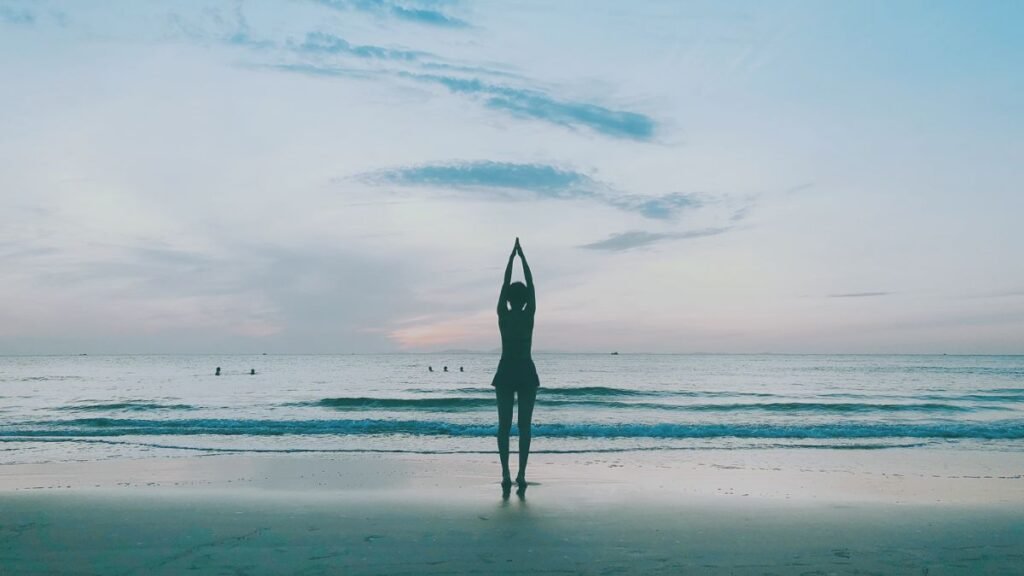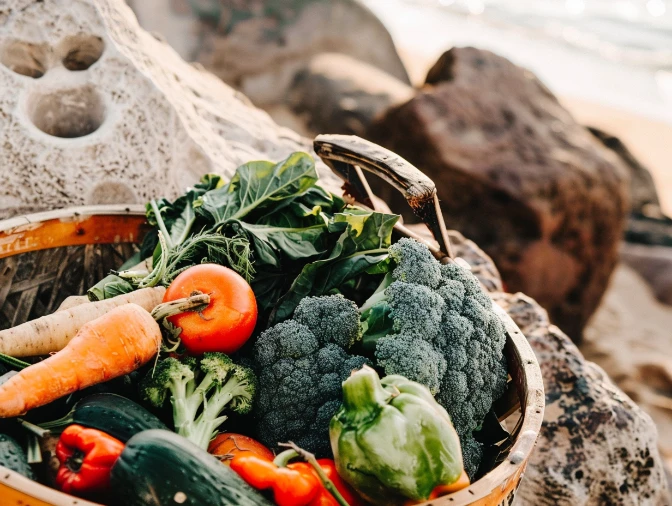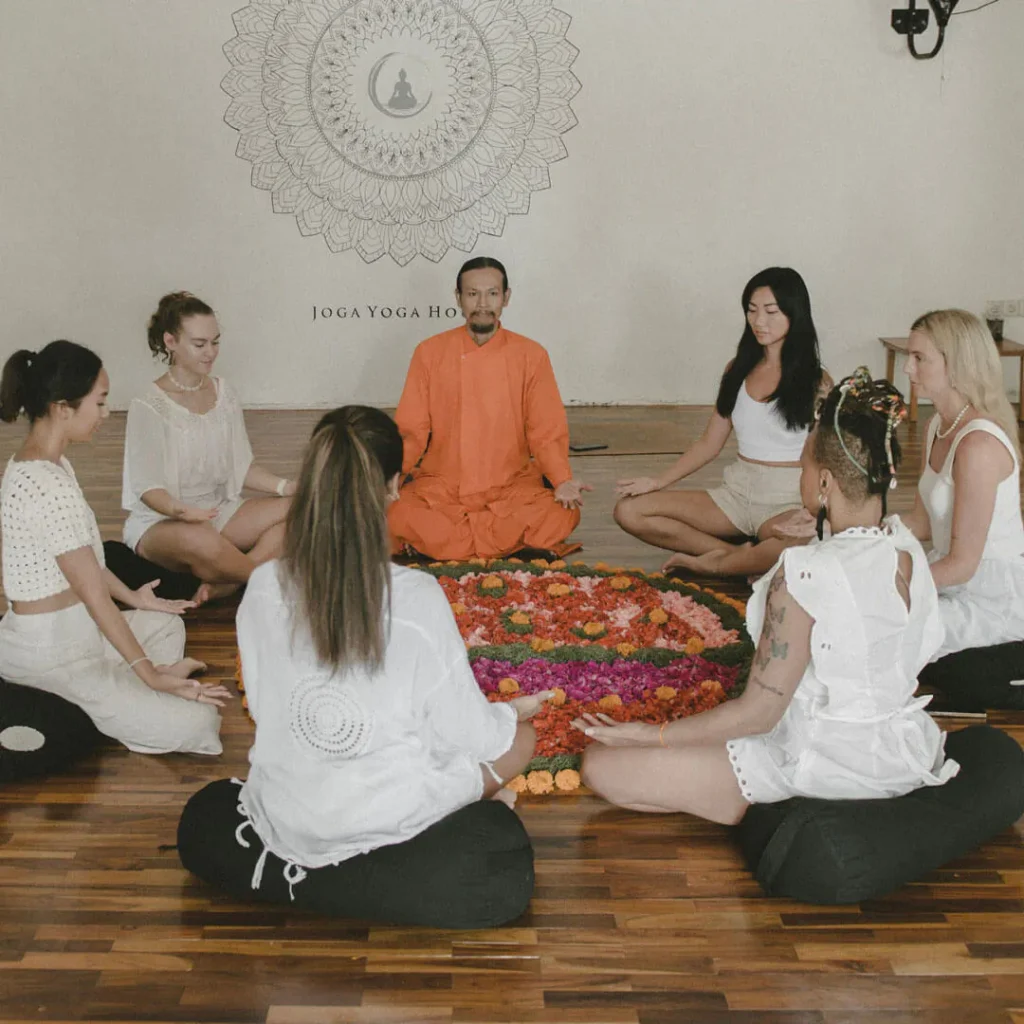Yoga, a practice known for its benefits in flexibility, strength, and range of motion, can sometimes lead to a curious phenomenon: joint creaking.
While often harmless, this creaking can be a source of curiosity and even concern for some.
Understanding the mechanics of joint creaking, the effects of yoga on joint pressure and movement, and the factors that can influence creaking after exercise will shed light on this common occurrence. We will delve into the anatomy of joints, the role of synovial fluid, and the various causes of creaking, including gas bubbles, cartilage changes, and tendon movement.
We’ll also explore the impact of age, activity level, underlying conditions on joint creaking, and the importance of hydration and nutrition.
The Mechanics of Joint Creaking: Why Do My Joints Creak After Yoga

Joint creaking, also known as crepitus, is a common phenomenon in various joints throughout the body, particularly after physical activity like yoga. While it can be disconcerting, it is often harmless and doesn’t necessarily indicate a serious problem.
Understanding the anatomy of joints and the factors contributing to creaking can help alleviate any concerns.
Joint Anatomy and Movement
Joints are complex structures that allow for movement between bones. They are composed of various components, including:
- Cartilage: A smooth, slippery tissue that covers the ends of bones, reducing friction and providing cushioning.
- Synovial fluid: A viscous fluid that lubricates the joint and nourishes the cartilage.
- Ligaments: Strong, fibrous tissues that connect bones and provide stability to the joint.
- Tendon: A fibrous cord connecting muscle to bone, allowing movement.
The interaction of these components facilitates joint movement. When we move, the cartilage surfaces glide over each other, lubricated by synovial fluid. The ligaments and tendons provide stability and control the range of motion.
Synovial Fluid and Lubrication
Synovial fluid plays a crucial role in joint lubrication and function. It is a viscous, clear fluid produced by the synovial membrane, a thin layer of tissue that lines the joint capsule. Synovial fluid contains hyaluronic acid, which gives it viscosity and lubricating properties.
This viscosity allows the fluid to cushion the joint surfaces and reduce friction during movement.
Causes of Joint Creaking: Why do my joints creak after yoga?
Joint creaking can be caused by a variety of factors, including:
- Gas Bubbles: As joints move, the pressure within the joint space can change, causing dissolved gases in the synovial fluid to form bubbles. These bubbles can then collapse, producing a popping or crackling sound. This is a common cause of creaking, especially after periods of inactivity.
- Cartilage Changes: Over time, cartilage can wear down or become damaged, leading to rougher joint surfaces. This can result in creaking as the bones rub against each other.
- Tendon Movement: Tendons can also contribute to joint creaking as they slide over bone or other tendons during movement. This is particularly common in the shoulder and knee joints.
Yoga and Joint Health

Yoga is a practice that can benefit joint health in numerous ways. It promotes flexibility, strength, and range of motion, all contributing to joint health and well-being.
Impact of Yoga Poses on Joints
Yoga poses, or asanas, involve various movements and positions that can affect joint pressure and movement. The gentle stretching and strengthening exercises in yoga can help improve joint mobility and flexibility, reducing the risk of injury and pain.
Yoga Poses and Joint Creaking
Some yoga poses may be more likely to cause joint creaking. These poses typically involve movements that create a greater range of motion in the joints, which can lead to the release of gas bubbles in the synovial fluid. The popping sound you hear is the result of these bubbles bursting.
- Twisting Poses: Poses like the seated twist or the revolved triangle pose involve rotating the spine and hips, which can create pressure on the joints and cause creaking.
- Deep Hip Flexor Stretches: Poses like the pigeon pose or the half-pigeon pose stretch the hip flexors, affecting the pressure on the hip joint and leading to creaking.
- Shoulder Stretches: Poses like downward-facing dog or upward-facing dog involve stretching the shoulders and arms, which can put pressure on the shoulder joint and cause creaking.
It’s important to note that joint creaking after yoga is usually harmless and does not necessarily indicate a problem. However, if you experience pain or discomfort, it’s best to consult a healthcare professional.
Factors Influencing Joint Creaking

Joint creaking, also known as crepitus, is a common phenomenon that can be influenced by various factors. While it’s often harmless, understanding the contributing factors can help address underlying concerns and maintain joint health.
Age and Activity Level
Age and activity level play a significant role in joint creaking. The cartilage that cushions our joints naturally deteriorates as we age, leading to increased friction and creaking. Similarly, individuals who engage in high-impact activities or strenuous exercise may experience more joint creaking due to the repetitive stress on their joints.
Underlying Conditions
Certain underlying conditions can contribute to joint creaking. These include:
- Osteoarthritis: This degenerative joint disease causes cartilage breakdown, leading to bone-on-bone friction and creaking.
- Rheumatoid Arthritis: This autoimmune disease causes inflammation and damage to the joint lining, resulting in creaking and stiffness.
- Tendonitis: Inflammation of the tendons, which connect muscles to bones, can cause joint creaking.
Hydration and Nutrition
Maintaining adequate hydration and a balanced diet is crucial for joint health.
- Hydration: Proper hydration helps lubricate the joints and reduce friction, minimizing creaking.
- Nutrition: Consuming a diet rich in calcium, vitamin D, and omega-3 fatty acids supports cartilage health and reduces joint inflammation, potentially decreasing creaking.
Types of Exercise
Different types of exercise can lead to varying degrees of joint creaking. High-impact activities like running or jumping may cause more creaking than low-impact exercises like swimming or cycling. High-impact activities exert greater force on the joints, potentially causing more friction and wear.
When Creaking is a Concern

While joint creaking after yoga is often harmless, knowing when it might signal a more serious issue is essential. Joint creaking accompanied by other symptoms can indicate underlying joint problems that require attention.
Signs of Joint Problems Beyond Creaking
It’s essential to pay attention to any additional symptoms alongside joint creaking. These could indicate a problem beyond the normal wear and tear of joints.
You might notice your joints creaking after yoga, especially if you’re new to the practice. This is often due to the increased range of motion and flexibility you gain through yoga. While this creaking can indicate healthy joint movement, you might wonder if yoga is a better alternative to a chiropractor for addressing joint pain.
To learn more about the benefits of yoga compared to chiropractic care, check out this article: Is doing yoga better than chiropractor? Ultimately, the best approach depends on your individual needs and preferences, and a qualified professional can help you determine the best course of action.
- Pain: Persistent or worsening joint pain, mainly if localized to a specific area, could indicate inflammation or damage.
- Swelling: Swelling around a joint can indicate inflammation, fluid buildup, or injury.
- Stiffness: Difficulty moving a joint, or feeling stiff after periods of inactivity, could indicate joint inflammation or degeneration.
- Redness: Redness around a joint can indicate inflammation or infection.
- Warmth: Increased warmth around a joint can also indicate inflammation.
- Limited Range of Motion: If you find moving a joint through its full range of motion challenging, it could be a sign of joint damage or stiffness.
When to Consult a Healthcare Professional
If you experience any of the above symptoms alongside joint creaking, it’s crucial to consult a healthcare professional. They can assess your symptoms, perform a physical examination, and recommend appropriate treatment options.
Managing Joint Pain and Discomfort After Yoga
If you experience joint pain or discomfort after yoga, there are several strategies you can implement to manage it:
- Rest: Allow your body to recover by taking breaks and avoiding strenuous activities exacerbating the pain.
- Ice: To reduce inflammation and pain, apply ice packs to the affected area for 15-20 minutes several times daily.
- Compression: Use a compression bandage to support the joint and reduce swelling.
- Elevation: Elevate the affected joint above your heart to reduce swelling.
- Over-the-Counter Pain Relief: Consider over-the-counter pain relievers like ibuprofen or acetaminophen to manage pain and inflammation.
- Gentle Stretching: Perform gentle stretches for the affected joint to improve flexibility and range of motion.
- Modify Your Yoga Practice: Adjust your yoga routine to avoid poses that aggravate your pain. Consider working with a qualified yoga instructor to create a personalized practice that suits your needs.
Strategies for Reducing Joint Creaking

Joint creaking after yoga, while often harmless, can be a source of discomfort and concern. Fortunately, several strategies can help minimize creaking and promote joint health.
Warming Up Before Yoga
A proper warm-up is crucial for preparing your joints for the demands of yoga. Warming up increases blood flow to the muscles and joints, reducing stiffness and improving flexibility.
- Dynamic Stretching: Dynamic stretches involve controlled movements that gradually increase range of motion. Examples include arm circles, leg swings, and torso twists.
- Light Cardio: Gentle cardiovascular exercises, such as walking or jogging in place, help elevate your heart rate and warm up your muscles.
- Sun Salutations: Sun salutations are a series of flowing poses that effectively warm up the entire body.
Proper Form and Alignment
Maintaining correct form and alignment during yoga poses is essential for minimizing joint stress.
- Engage Core Muscles: Engaging your core muscles provides stability and support for your spine and joints, reducing strain.
- Listen to Your Body: Pay attention to any pain or discomfort. If a pose feels too intense, modify it or skip it altogether.
- Seek Guidance: Consider working with a qualified yoga instructor who can provide personalized guidance on proper form and alignment.
Exercises and Stretches for Joint Health
Regular exercise and stretching can improve joint lubrication, flexibility, and overall mobility, potentially reducing creaking.
- Range of Motion Exercises: These exercises involve moving your joints through their full range of motion, promoting flexibility and lubrication. Examples include shoulder rolls, knee circles, and ankle rotations.
- Strength Training: Building muscle strength around your joints can help provide support and stability, reducing stress. Include exercises that target the muscles surrounding your hips, knees, and shoulders.
- Yoga Poses for Joint Health: Specific yoga poses, such as cat-cow, downward-facing dog, and pigeon pose, can improve flexibility and range of motion in the spine, hips, and shoulders.
Closure

While joint creaking after yoga is often a normal and harmless occurrence, it’s essential to be aware of any accompanying pain, swelling, or stiffness. Understanding the potential causes of creaking, the benefits of yoga for joint health, and the strategies for reducing creaking can empower you to enjoy your practice with greater awareness and comfort.
Remember, if you experience persistent joint discomfort or have concerns about creaking joints, it is always recommended that you consult a healthcare professional.
FAQ Corner
Is joint creaking after yoga always a sign of a problem?
No, joint creaking after yoga is often normal and not a cause for concern. It’s usually due to the movement of gas bubbles in the synovial fluid, which lubricates your joints. However, it’s best to consult a healthcare professional if you experience pain, swelling, or stiffness along with the creaking.
What can I do to reduce joint creaking after yoga?
Warming up before yoga, using proper form and pose alignment, and incorporating exercises that improve joint lubrication and flexibility can help minimize creaking. Staying hydrated and maintaining a healthy diet are also important for joint health.
Are there certain yoga poses that are more likely to cause joint creaking?
Poses that involve a lot of joint compression or movement, such as deep twists or forward bends, may be more likely to cause creaking. However, individual experiences can vary.
Can I continue practicing yoga if my joints creak?
Yes, you can continue practicing yoga if it doesn’t cause pain or discomfort. Listen to your body, modify poses as needed, and consult a healthcare professional with any concerns.






